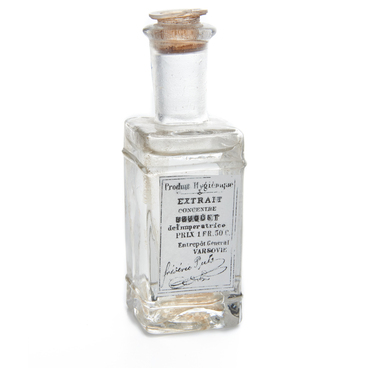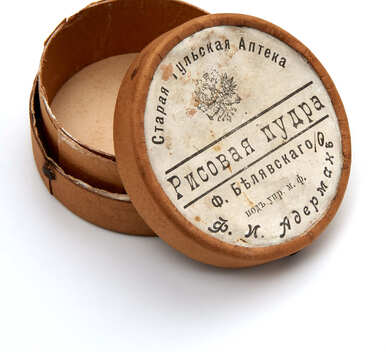Among the exhibits of the ‘Old Tula Pharmacy, ’ there is a ceramic jar from the perfume company ‘Georg Min and Co.’ The word ‘pomade’ (‘pomada’ in Russian) has Roman roots (from the Latin ‘pomum’ — ‘apple’): in ancient Rome, this was the name of a healing ointment made of apple pulp and fat. This word came to the Russian language in the 17th century from French or German.
In the 19th — early 20th century, pomade was a hair care product that added shine and stability to the hair. It was popular with both women and men. The main ingredient was fat from pork, bovine or other fat, and aromatic substances were added to it.
By 1850, there were 11 pomade factories in Moscow; they manufactured products worth 400 thousand rubles a year. When hair sprays and hair gels came into existence, the Russian word ‘pomada’ began to be used to refer to lipsticks as well.
At the end of the 18th century, cream, pomade, and balm containers were made in Gzhel. At first, a certain peasant Stepan Fedotov was engaged in production, but already in the 1820s, earthenware jars were made at two village manufactories.
The pomade containers were somewhat different from other pharmacy containers. They had thick walls and a massive rounded bottom so that it was more convenient to take out the contents with a wooden spatula or fingers. Pomade jars were made of clay and covered with an opaque layer of glaze with the addition of tin on top: it protected the ceramic product from acids and alkalis and made the container impermeable. The container was always white inside, outside it was painted.
Archaeologists often find small ceramic containers in the late cultural deposits of Russian cities. This exhibit was found in the attic of the building where the exhibition ‘Old Tula Pharmacy’ is located. There are indications that pharmacy pomade jars were used not only for their intended purpose. In particular, Alexander Pushkin’s neighbor Praskovya Osipova recalled that, while staying in the village of Mikhailovskoye, the poet lived quite modestly and even used a cosmetic jar, probably of Gzhel production, instead of an inkwell.



